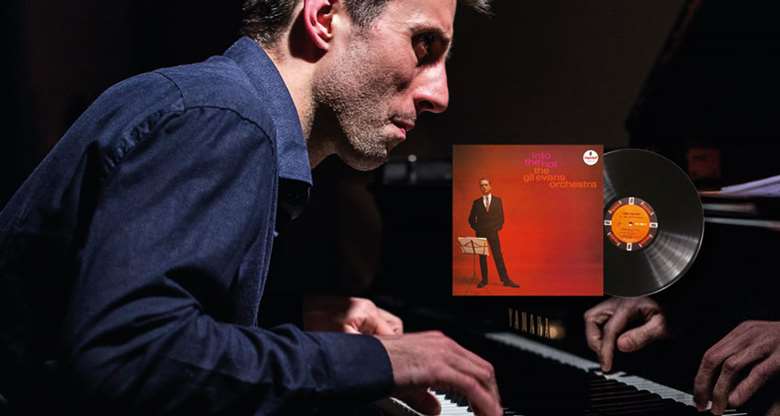Life-changing albums: Gil Evans’ ‘Into The Hot’
Friday, January 11, 2019
Pianist Alexander Hawkins talks about Cecil Taylor’s seismic contributions on Gil Evans’ Into The Hot, in a tribute to the late pianist who died 5 April 2018.

Interview by Brian Glasser
Into The Hot, officially a Gil Evans album, was a real epiphany, but it’s the Cecil Taylor aspect that really did it for me. Taylor contributed three tracks; the other three were by Johnny Carisi, with Gil Evans conducting the orchestra on those. The album was in some senses like a curated collection of Third Stream music
But it’s curious – I’m not sure this is even my favourite Cecil album: pianistically, that would probably be Silent Tongues; compositionally, perhaps I prefer Unit Structures; it’s not the most beautiful; it’s not the one I have the most sentimental connection to, which would be the one with Louis Moholo. But it’s absolutely gripping; and more than all of his other albums, it’s a Rosetta Stone for understanding where he came from, and what was to come, and how he fits into contemporary music generally – not just jazz. It’s got the characteristic of a manifesto. I can’t think of anything like it! It somehow shows directions he didn’t take, which makes it even more rewarding and inspirational. He’s so quixotic that you can’t say his entire language was mapped out – but there’s a lot here.
It grabbed me from the start. I’m a complete Ellington junkie, so I understood this record immediately – if not fully, then intuitively. It’s so Ellingtonian in concept as far as composition goes. Plus, there are definitely pianistic precedents in there – not just Ellington, but Tatum, Powell and Monk. It certainly wasn’t the first Cecil record I heard, but it was among the early ones, and for the uninitiated there’s enough in his piano playing to grab onto – it’s not completely alienating. You can hear him improvising over an explicit swing beat, which is interesting in terms of understanding his rhythmic language later on when it becomes abstracted from that.
I went back to the album recently when Kaja Draksler and I arranged these pieces for a septet featuring two pianos at a festival in Amsterdam, and had to transcribe them first. Exploring them in that mechanical depth renewed and deepened my understanding. So, though I’ve always loved them, going back over them in that way helped me appreciate technically how extraordinary they are.
‘He’s using everything to enable his imagination to go crazy – it all serves as a springboard, it’s not just a post-modern collage’
Above all, you have to admire his single-mindedness. That should be one of his main legacies – to inspire people to be single-minded. More specifically, there are lots of things that I’ve taken from it into my work, both in terms of playing and writing. I think the quantity of very explicit composition on it is what would be most surprising to those who know Cecil Taylor only by reputation. Endless column inches have been expended calling him a ‘free jazz musician’; but this is very organised music. There are not many 1961 albums with that volume of composition on them. Although it’s organised, structurally he’s doing things that you’re not hearing anywhere else, apart perhaps from the most sophisticated Ellington things. ‘Bulbs’, one of the tunes, feels almost palindromic – there are some very strange structures in that; and the way these units are used and moved within the composition gives a clue about how he would later use motivic and harmonic units in his more abstract music. You can already see his preoccupation with musical architecture.
It’s also been an influence on me because it shows a way that you can reference music you love and at the same time make that into something personal. So, for example, during ‘Bulbs’, you can hear the James Brown R&B music of 1961; but there’s also an almost shocking prescience of the funk, too. ‘Mixed’ has a passage that is reminiscent of classical music in how it’s scored; immediately following that, there’s a ballad where Jimmy Lyons plays Johnny Hodges to Taylor’s Ellington (and Shepp plays Ben Webster). All these influences are forged into something that isn’t at all derivative. That’s inspirational to me as a composer. As a free jazz pianist, he did create a licence for wildness – there are moments when he does use cutting loose as a device. But he deploys that language knowingly and sparingly. So, in my view, he’s using everything to enable his imagination to go crazy – it all serves as a springboard, it’s not just a post-modern collage.
Strangely, I don’t remember the first moment I heard the record! It was probably at my local record shop in Oxford – I’d have been a teenager. I’ve always been a student of the music. I grew up with the piano tradition; and because Taylor was so much part of that, this was just something I needed to hear.
This article originally appeared in the August 2018 issue of Jazzwize magazine. To find out more about subscribing, please visit: Subscribe